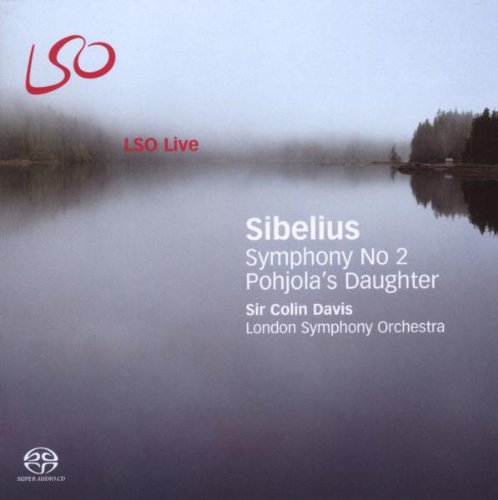Sibelius Symphony No 2; Pohjola's Daughter
Sir Colin Davis commits another Second to disc, and now shows much greater assurance
View record and artist detailsRecord and Artist Details
Composer or Director: Jean Sibelius
Genre:
Orchestral
Label: LSO Live
Magazine Review Date: 6/2007
Media Format: Super Audio CD
Media Runtime: 59
Mastering:
Stereo
DDD
Catalogue Number: LSO0605

Tracks:
| Composition | Artist Credit |
|---|---|
| Symphony No. 2 |
Jean Sibelius, Composer
Colin Davis, Conductor Jean Sibelius, Composer London Symphony Orchestra |
| Pohjola's Daughter |
Jean Sibelius, Composer
Colin Davis, Conductor Jean Sibelius, Composer London Symphony Orchestra |
Author: Peter Quantrill
What Sir Colin Davis has to say about Sibelius’s Second Symphony hasn’t changed in substance since his first recording with the Boston Symphony, but the paragraphs now flow with ever more assured, Wordsworthian cadences – “Grand in itself alone, but in that breach / Through which the homeless voice of waters rose, / That dark deep thoroughfare, had Nature lodged / The Soul, the Imagination of the whole.” The life-and-death struggle of the second movement is underlined by two alternating tempi which Davis has not contrasted so dramatically before, not even in the quicker concert performance in Dresden. Strong rhythmic underpinnings in the Scherzo, the highly contrasted trio and their eventual assimilation into the mighty onrush towards the finale: these all have a distinctively Beethovenian cast. The finale’s jubilations justify their length and splendour, just about, with some generous portamento and care over the recitatives of the central, quieter section.
The LSO are more attentive than their rivals, including their earlier selves, and while some will retain an allergy to the close Barbican acoustic of all LSO Live releases, I am more bothered by the turbocharged brass and occluded balances of the Philips recording and the soggy RCA engineering.
Pohjola’s Daughter is an unusual but logical coupling, having its origins in the same Italian trip that brought the birthpangs of the Second Symphony. The tone-poem only saw the light five years after the symphony, however, and you could see it as the Yin to the finale’s Yang, moving from the interrupted sonata-form processes of the symphony’s first movement into still darker regions of creative despair – the Fourth Symphony looms on the horizon. You can sense this in Davis’s conception, which prizes coherence over local colour; an exceptionally fine Toscanini disc listed above shows how an underrated Sibelian of another age pulled off many of the same tricks in both symphony and tone-poem.
The LSO are more attentive than their rivals, including their earlier selves, and while some will retain an allergy to the close Barbican acoustic of all LSO Live releases, I am more bothered by the turbocharged brass and occluded balances of the Philips recording and the soggy RCA engineering.
Pohjola’s Daughter is an unusual but logical coupling, having its origins in the same Italian trip that brought the birthpangs of the Second Symphony. The tone-poem only saw the light five years after the symphony, however, and you could see it as the Yin to the finale’s Yang, moving from the interrupted sonata-form processes of the symphony’s first movement into still darker regions of creative despair – the Fourth Symphony looms on the horizon. You can sense this in Davis’s conception, which prizes coherence over local colour; an exceptionally fine Toscanini disc listed above shows how an underrated Sibelian of another age pulled off many of the same tricks in both symphony and tone-poem.
Discover the world's largest classical music catalogue with Presto Music.

Gramophone Digital Club
- Digital Edition
- Digital Archive
- Reviews Database
- Full website access
From £8.75 / month
Subscribe
Gramophone Full Club
- Print Edition
- Digital Edition
- Digital Archive
- Reviews Database
- Full website access
From £11.00 / month
Subscribe
If you are a library, university or other organisation that would be interested in an institutional subscription to Gramophone please click here for further information.




